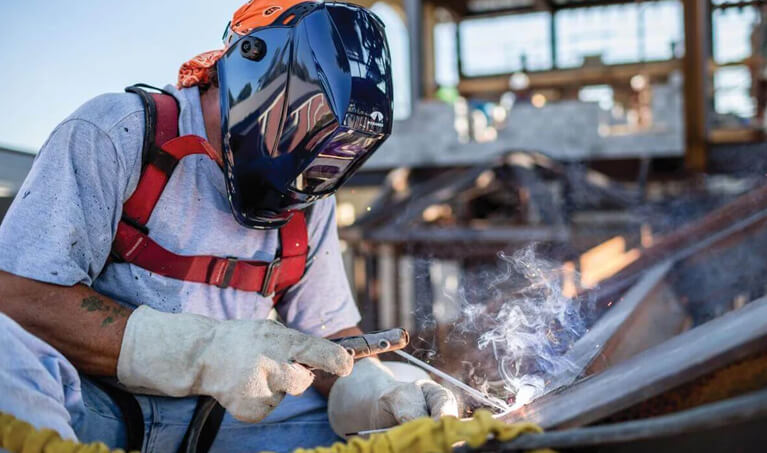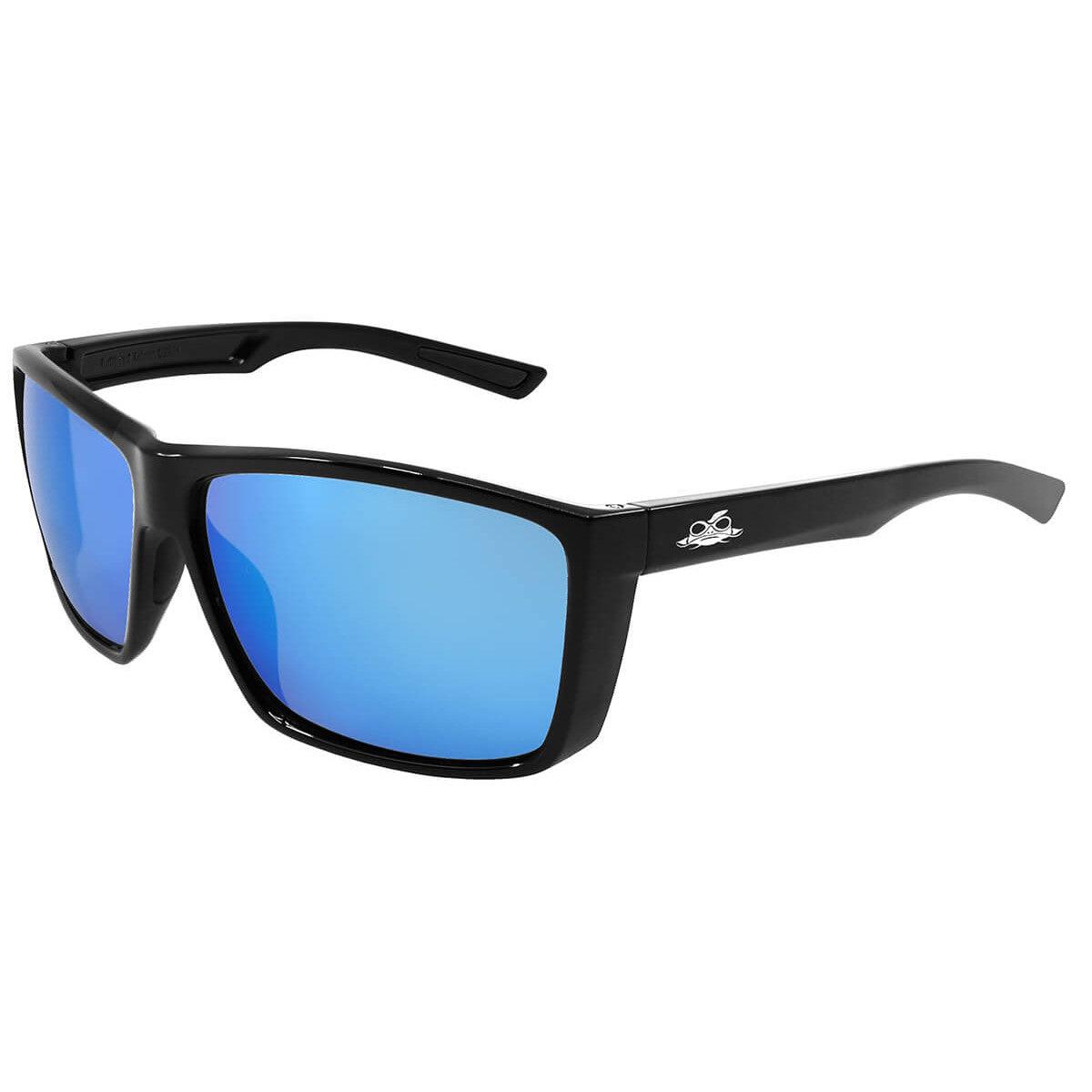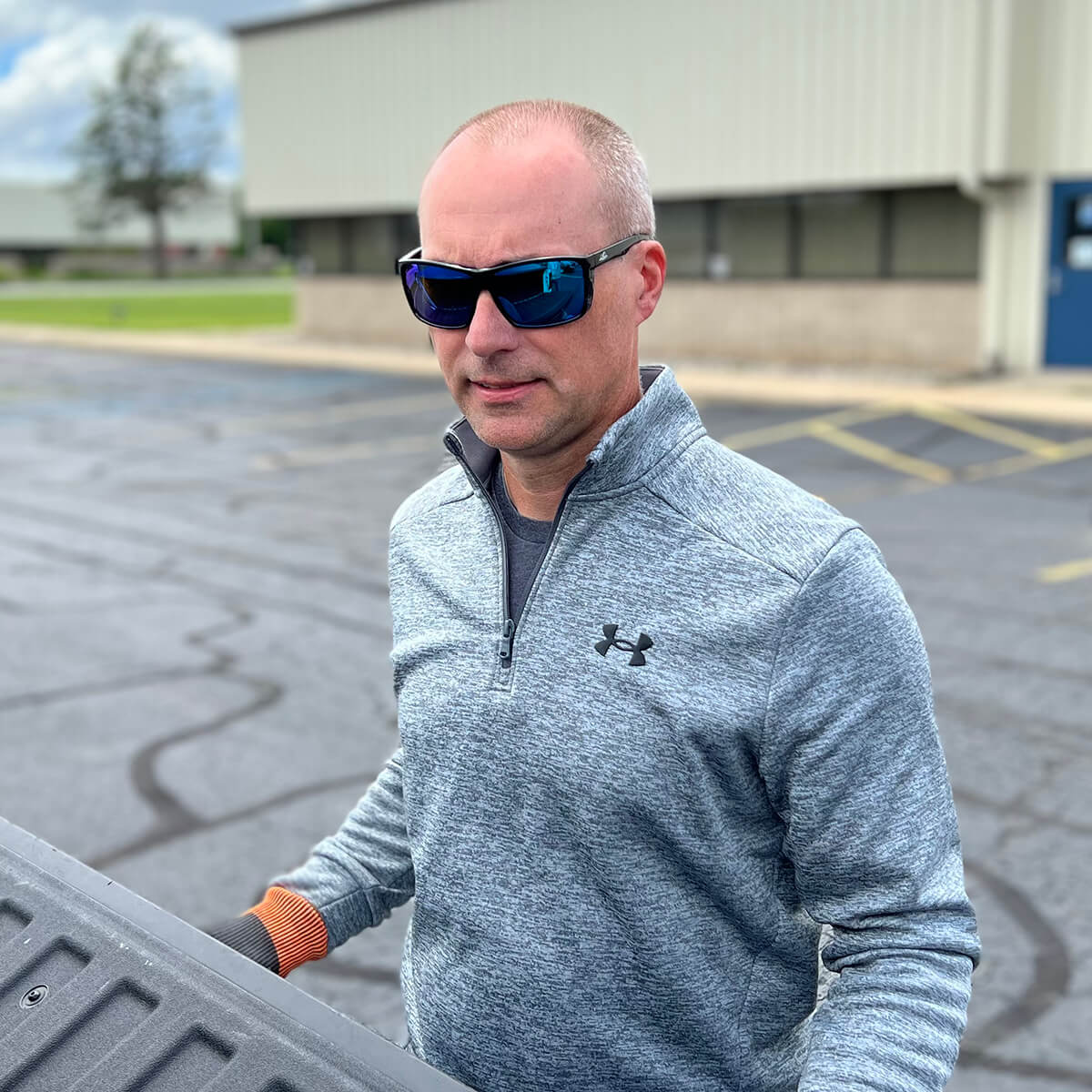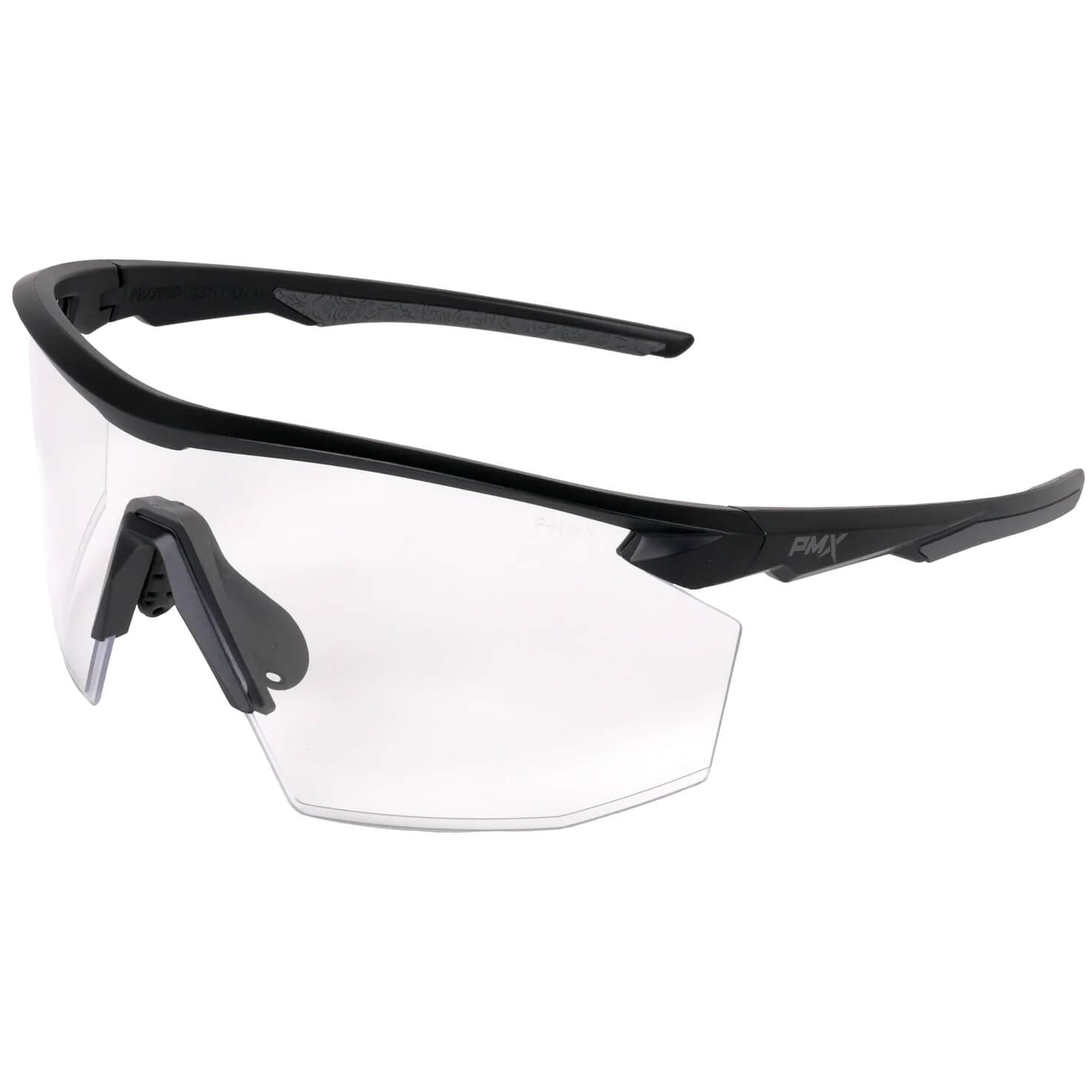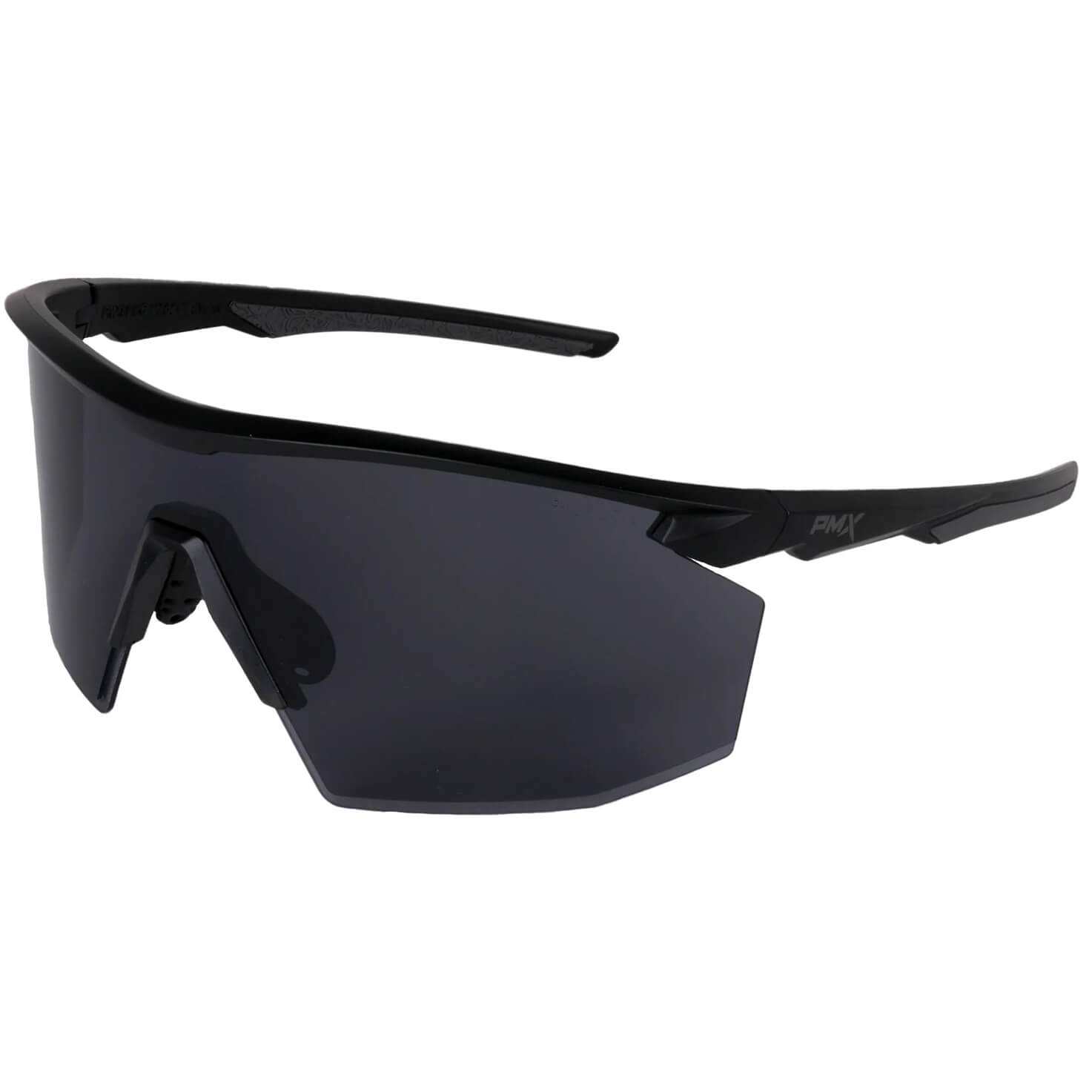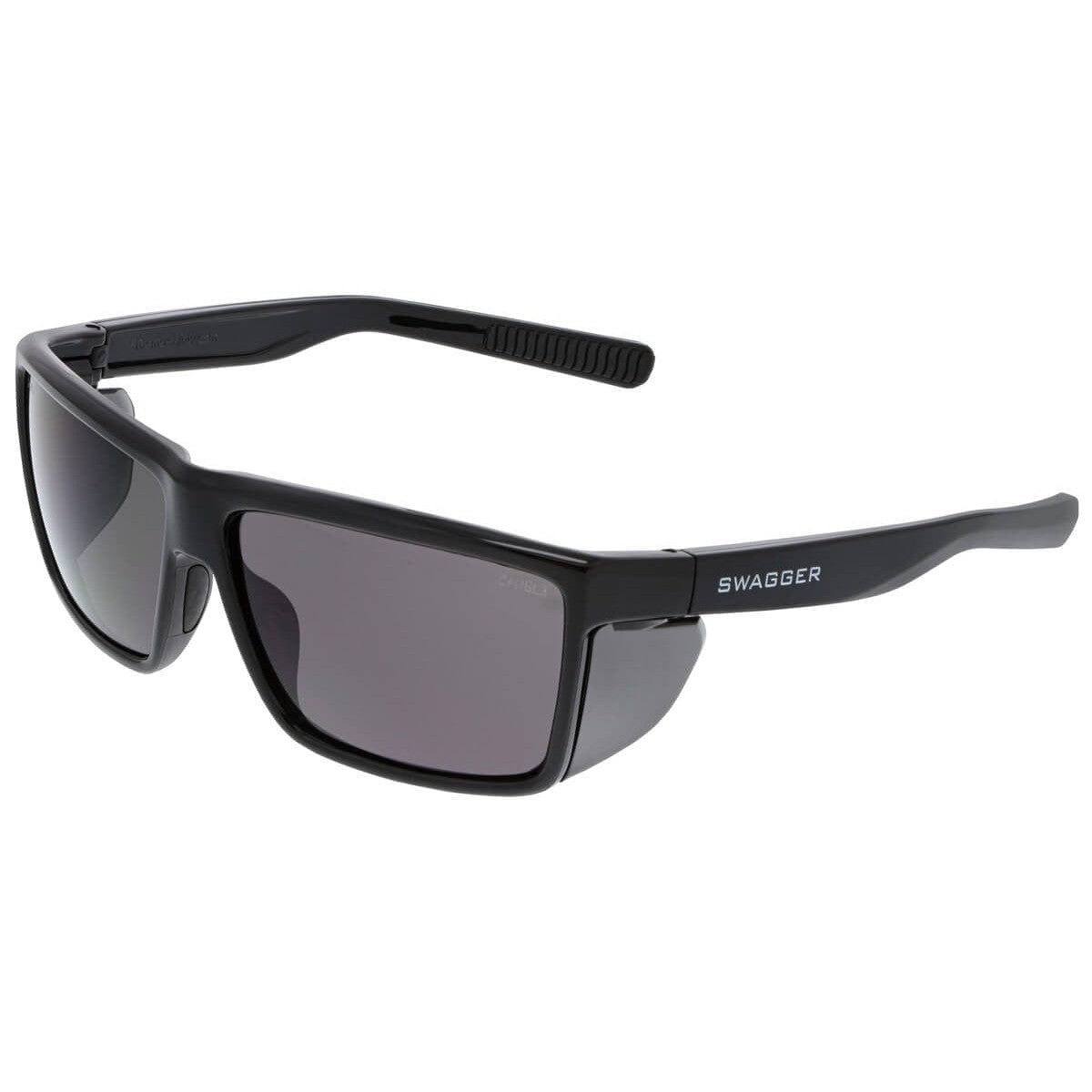Essential safety equipment for welding includes respirators to protect against fumes and oxides and fire/flame resistant clothing and aprons to protect against heat and burns. In addition, earmuffs safeguard against noise, and boots and gloves protect against heat and burns. However, a welder's most essential safety equipment is eye and face protection.
Welding equipment for eye and face safety includes helmets, goggles, and leather gear to help protect from radiation, hot slag and sparks, intense light, irritation, and chemical burns. Choosing the right helmet and the appropriate lens shade is crucial for every welder.
Choosing a Welding Lens Shade
Wearing the correct lens shade when welding is essential because doing so protects the eyes against photokeratitis, a painful condition somewhat like a sunburn to the cornea caused by electromagnetic energy from an arc or flame. This radiant energy, also known as light radiation, can severely and permanently injure your eyes.
Eye protection for welders needs filtered lenses with a shade number that provides the necessary protection for the job. The shade number tells how much light radiation can pass through the lens and into the eyes. The higher the number, the darker the filter and the less light radiation.
Shades come numbered as high as 14, and the shade necessary depends on the specific task being performed. For example, shielded metal arc welding requires at least a Shade 7 and up to a Shade 14, depending on the electrode size and arc current. A Shade 3 up to a Shade 8 is required for gas welding and oxygen cutting operations, depending on plate thickness. Lower shades are used for tasks like torch brazing and torch soldering.
Welding Goggles:
- Pyramex V2 Goggles with Shade 5 welding lens
- MCR Safety 28550 Welding Goggle with IR Shade 5.0 lens
- KleenGuard Monogoggle XTR with Shade 5.0 lens
Welding Safety Glasses:
- Bolle Override Safety Glasses with Black Temples and IR Shade 5 anti-scratch lens
- Bouton Traditional Safety Glasses with IR 3.0 lens
- Phillips Welding Glasses with Shade 14 lens
Combining Eyewear
Some workers prefer to combine eyewear to reach the necessary shade. When doing so, add the shade numbers for both pieces of eyewear together to obtain the level of shade protection. For example, welding safety glasses with a Shade 5 lens worn under a shield with a Shade 5 welding lens provides Shade 10 protection.
The Need for Versatility
An additional consideration when choosing a lens shade involves the need for versatility. When moving from one location or task to another, many workers need the ease of flipping from one lens type to another to ensure compliance with safety standards.
In these situations, welding safety glasses like the Uvex Horizon Safety Glasses with Shade 3 flip-up lenses are another excellent option.
Shade Level Rule of Thumb
If you're unsure of the shade level needed for a particular task, use this rule of thumb provided by OSHA.
Start with a shade that is too dark to see the weld zone. Then, go to a lighter shade, which gives a sufficient view of the weld zone without going below the minimum.
This fact sheet also provides a detailed list of the shade recommendations by welding type, so it's a valuable resource to keep on hand when determining the appropriate shade level.
The Pyramex Leadhead Auto-Darkening Helmets are popular and budget-friendly.
How to Choose a Welding Helmet
In addition to selecting an appropriate lens shade, choosing the right welding helmet is also crucial. The cost of welding helmets ranges from about $15 for a basic standard helmet to over $100 for auto-darkening helmets.
"As a general rule, spending more on a welding helmet will increase comfort, improve your welding ability, result in higher quality welds, and ensure your safety." (Welding Design and Fabrication)
To help make the right decision, consider the various options available to help you determine the best mask for the situation. There are two basic lens types for welding helmets: passive and auto-darkening.
Passive Helmets
Passive helmets are the cheapest option and come with a fixed-shade lens, usually a Shade 10, though it depends on the manufacturer and the helmet model. The lens of a passive helmet is typically made of standard glass and coated with IR (infrared) and UV (ultraviolet) protection to keep the user safe from rays.
Pros for standard helmets:
- Provide essential protection at a low price range from about $15-$30.
- Provide sufficient head and face protection.
- Have a lens that is a piece of dark, tinted glass, usually with a #10 shade and ultraviolet (UV) and infrared (IR) coating.
Cons for standard helmets:
- Must lift and lower manually after lighting the welder, before and when finished welding, and to inspect work before proceeding
- Presents a challenge, especially for beginners, when trying to keep the gun/torch in proper position and simultaneously lowering and raising the helmet
- Difficult to use in restricted spaces with limited room for moving the helmet face up and down
- Potential neck discomfort from having to move the helmet face up and down multiple times a day, day after day
- This May result in less efficiency from having to regularly move the helmet up and down.
Standard helmets are a decent choice for the home welder, handyman, or small shop owner who does the occasional welding job.
Auto-Darkening Helmets
The lens of auto-darkening helmets usually has a passive shade of 3 -4. Electronic sensors located in the lens mount of the helmet detect the welding arc. The arc detection triggers the filter to automatically darken (1/30000 of a second) to a preset shade. The shade range is usually variable and ranges from shades 9 to 13.
The virtually instantaneous darkening of these helmets provides many quality-of-life advantages that make them extremely popular with professional welders.
Pros of auto-darkening welding helmets:
- Excellent head and face welding protection
- The electronic filter lens instantaneously and automatically darkens and lightens
- A liquid-crystal display (LCD) with adjustable features allows you to set the shade level (typically shades 9-13) and sensitivity of the filter
- A passive lens shade of #3 or #4 will enable you to quickly inspect your work without lifting the mask
Cons of auto-darkening welding helmets:
- The initial cost is more than standard passive helmets
- Require batteries
- Replacement parts are more expensive
Professional welders and those who frequently weld usually use auto-darkening welding helmets.
A Luxury, Not a Necessity
Some welders believe that an auto-darkening helmet is a luxury, not a necessity. One welder instead recommends spending your money on your welding machine and rods.
"The more you practice welding, the more you will realize your welding rod or welding gun are nothing more than an extension of your hand, and it's pretty easy to figure out where that is at all times, even if you're not looking. After all, practice does make perfect." (Comment from a professional welder)
On the other hand, some feel auto-darkening helmets are well-worth their cost.
"Many injuries have been eliminated by auto-darkening helmets because they cover a welder's eyes at all times without risking exposure to irritating fumes and flying debris." (Auto Darkening Helmets by Cooper Miller)
Making the Right Choice
Knowing what's available and what you prefer is the best approach to deciding the type of welding helmet you should purchase. Add this to what you know about the right welding shade, and you're sure to have the best protection regardless of how much you weld.

